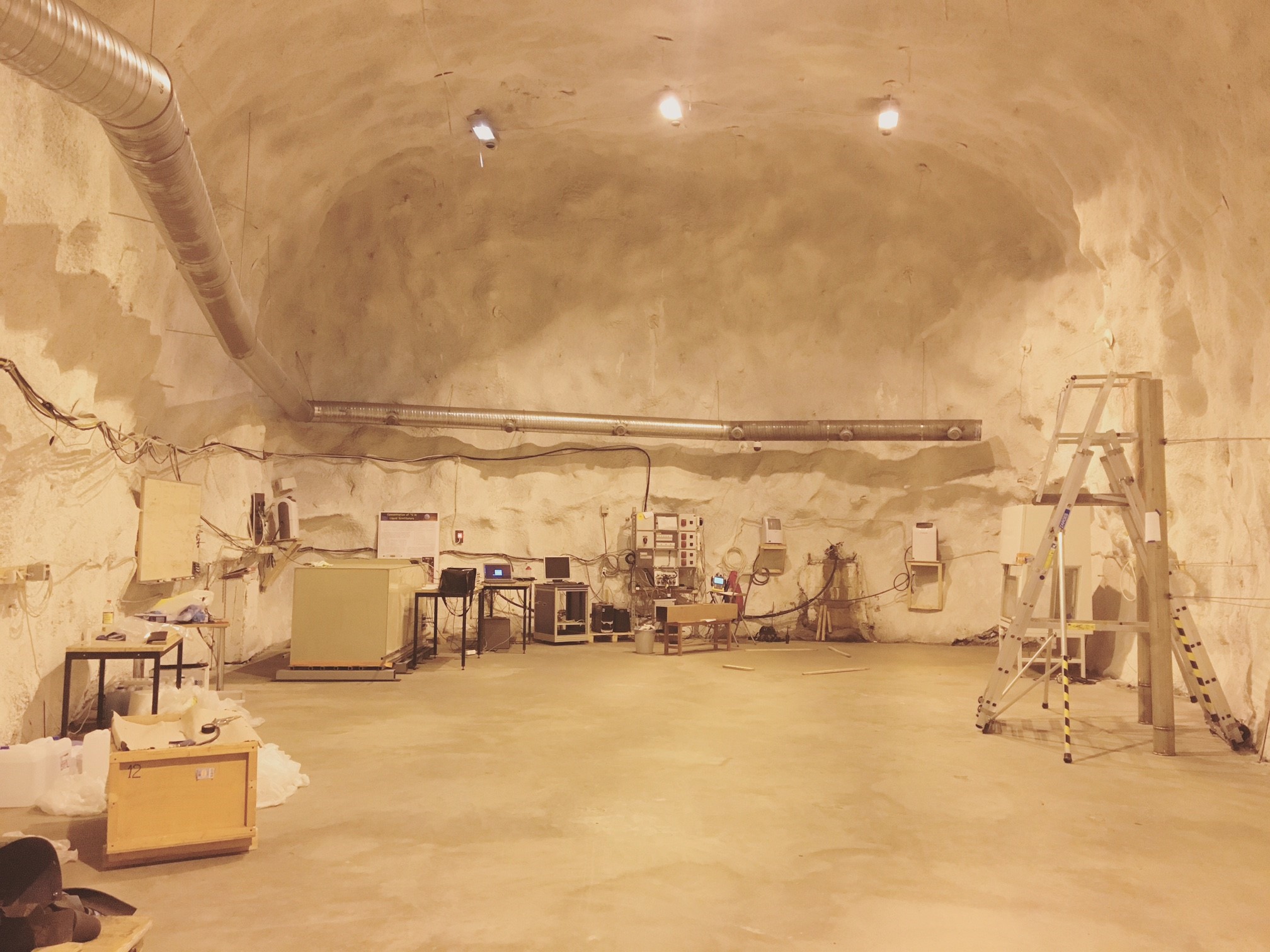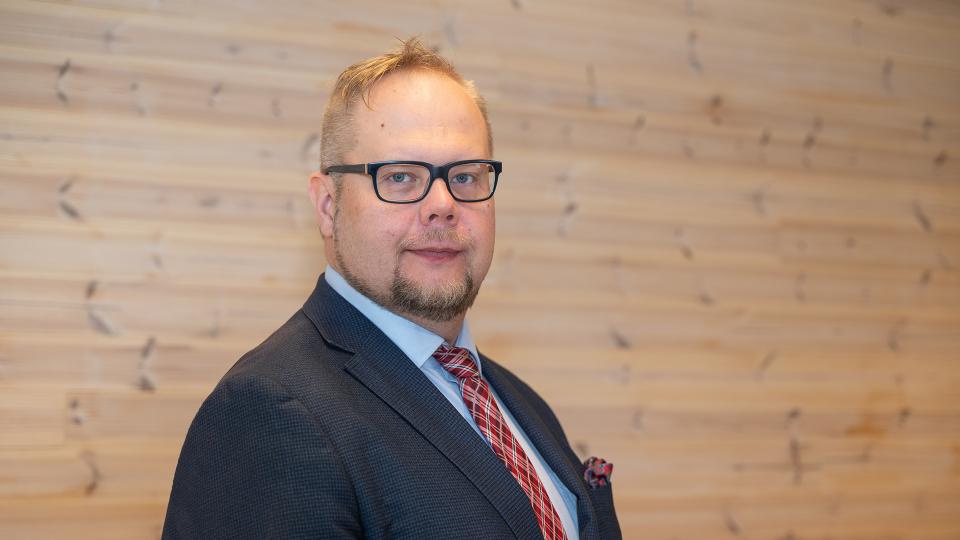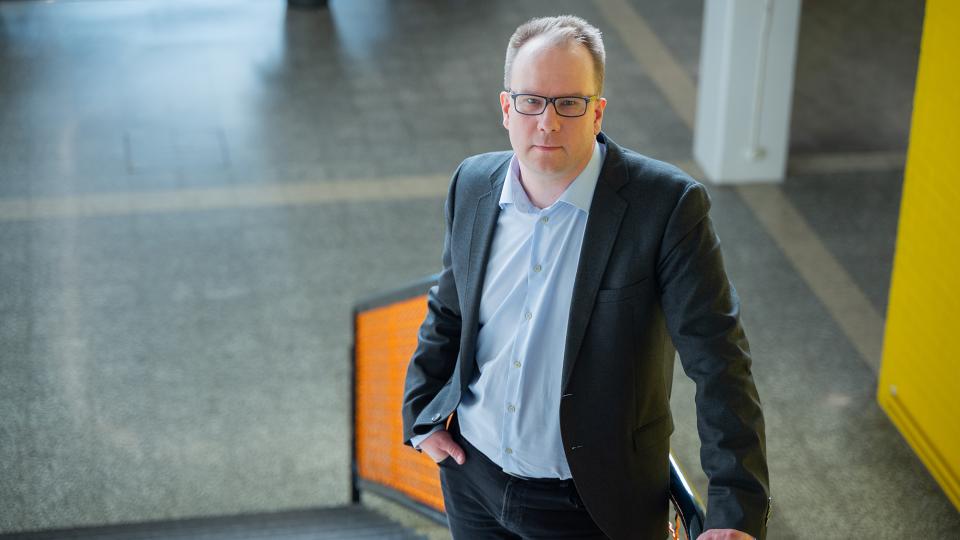Callio Lab

Callio Lab is a part of Empower Underground Laboratories Network (EUL) and H2020 Goldeneye projects, in addition to being a member of DULIA. Callio Lab has also had an active role in EIT Raw Materials projects (MINETRAIN), and it is one of the University of Oulu’s strategic research infrastructures.
The Pyhäsalmi Mine, which is located in the town of Pyhäjärvi in Northern Ostrobothnia, is one of the deepest known locations in Europe, reaching 1 445 meters below ground. As mining in Pyhäsalmi draws to a close, Callio Pyhäjärvi is being created as a globally unique, multidisciplinary operating environment. The mine and its surrounding grounds offer versatile opportunities for success for both new, innovative projects, and for established ones seeking new developments. Pyhäsalmi Mine can be regarded as one large laboratory space, as research can be conducted outside of the official laboratories as well.
Callio Lab has a long history at Pyhäsalmi Mine, as it began as a project of the Centre for Underground Physics in Pyhäsalmi (CUPP) in 2000. The CUPP project achieved recognition through the LAGUNA project’s results and from cosmic radiation measurements conducted in the EMMA experiment. CUPP researchers worked in active partnership with middle- and high school physics classes, which brought visibility to the University of Oulu’s physics programmes. CUPP activities were integrated into the newly launched Callio Lab in 2015, and operations widened from underground particle physics to a multidisciplinary research infrastructure. So far, projects have been carried out relating to geothermal- and renewable energy, intelligent lighting, circular economy, mine training, underground rescue, and the characterization of natural background radiation.

The University of Oulu’s Kerttu Saalasti Institute contributes to the development of the reuse of the mining area. Callio Lab provides ready and adaptable spaces for carrying out underground research projects. In 2021, the FIN-EPOS research infrastructure network was placed on the roadmap for Finnish research infrastructures. Callio Lab is a part of the national FIN-EPOS network as an underground infrastructure and through the EMMA observatory muon data, and as such Callio Lab may apply for research infrastructure funding.
Deep underground laboratories
Callio Lab is a member of the DULIA network, which includes Europe's five deep underground laboratories (DULs). DULs are used as sites for particle and astroparticle physics, where the rock overburden serves as a filter for observing rare phenomena. Callio Lab is Europe's second deepest underground site in meters water equivalent (m.w.e.).
Underground facilities at Callio Lab
Lab 1 is 75 meters underground, and it is reachable from the surface in 5 minutes by car. The experiment is built in the caverns of 75 m and extension has been built at the level of 45 m. The main system and the extension are connected through a drill hole connection to provide electricity and optical network cables for both data transfer and triggering. The ambient conditions are harsh (average temperature 9±2 C and relative air humidity 100%) but all the detectors and instruments can be placed inside dedicated farming plywood stations, where they are kept dry and warm with heaters. The Lab hosts the EMMA experiment, which measures cosmic rays' composition and measurements for the NEMESIS collaboration, interested in muon-induced neutron yield.

Lab 2 is built in an old exploration tunnel at a depth of 1430 meters. This is currently the deepest located Lab and is only ten meters above the bottom of the mine. The Lab consists of entrance and experimental halls both 120 m2. There is a concrete floor and shotcrete walls and roof. Extra rock stability is achieved through an additional 4 km of rock bolts installed into the rock. The Lab can be reached via the incline tunnel from the surface, which takes approximately 30 minutes. Another option is to take the elevator to the main level, located at a depth of 1410 meters, and from there drive 5 minutes to Lab 2. The temperature on average is 26 degrees Celsius, and relative humidity varies between 55-65%. The experimental hall most recently hosted the Callio Edible Insects From Mine -project (CEIFM).

Lab 3 is located at the depth of 990 meters. The Lab 3 is based on the existing infrastructures at the level. At this level there has been tests for mushroom growing, radon barriers and latest building information model tests. The Lab 3 can be reached from the surface by car in 30 minutes and from the main level in 10 minutes.
Lab 4 consists currently of two underground greenhouses. The greenhouses are equipped with fully automated hydroponic nutrition delivery systems. The location for the Lab 4 was selected based on the optimal surrounding temperature of 16 degrees Celcius. This stable temperature could be found at the depth of 660 m. The greenhouses can be reached from the surface by car in 20 minutes.
Lab 5 is located in tandem with the main level storage facilities at a depth of 1410 meters. The location is easy walking distance to the restaurant, electrical workshop, maintenance halls and restrooms. It is accessed via the elevator shaft to the main level, from where it is a short 2-minute walk to Lab 5. For the transportation of materials and larger equipment, it is recommended to use the incline tunnel from the surface. Temperature is a consistent 24 degrees Celsius and relative humidity is 49%. Lab 5 currently houses the C14 experiment.
At the level of 400 m, the underground rescue site hosts state-of-the-art facilities for education, training, development, and innovation occupational safety utilizing the unique Underground infrastructure of the Pyhäsalmi Mine. A virtual training accompanies the physical infrastructure environment.
The target group includes e.g. Mining Companies and their Subcontractors, Construction Companies, Energy Sector players, Nuclear Power Station Rescue Units, Research Institutes and Regional Fire & Rescue Services.
Contact: Project manager Veeti Kokkonen
+358 45 805 6622, veeti.kokkonen@pyhajarvi.fi

In addition to Labs 1, 2, 3, 4, 5, and 6, the mine in its entirety can also be considered an underground laboratory. Research and experimentation can be conducted outside of these established laboratories almost anywhere in the mine, with suitable preparation and safety precautions. In these cases, passage and transportation to the levels are done via the incline tunnel. Examples of such a wide use are the EIT RM MINETRAIN and H2020 GOLDENEYE projects.

Working underground makes it possible to create highly controlled environments for conducting research and with the ability to control all the parameters of a test setting. Although all underground locations are unique, they can be made to mimic numerous other research locations, which might not be accessible otherwise. Underground laboratories provide unique environments for many fields of research.
Underground research locations are stable environments. Experiments, conducted underground, are safe from the varying conditions on the ground, such as weather changes or air quality. The rock over-burden also provides technological advantages, such as an absence of disruptive acoustic or electrical noise and enhanced IT security options or even a complete isolation from the grid is possible.
Current
NEMESIS
NEMESIS (New EMma Experiment Searching for Indirect Signals), incorporates infrastructure from the EMMA experiment with neutron and large-area plastic scintillator detectors of the MAZE system. The experiment's aim is to combine muon tracking with position-sensitive neutron detection to measure precision yields, multiplicities, and lateral distributions of high-multiplicity neutron events induced by cosmic muons in various materials.
C14
The collaboration behind C14-experiment included the Universities of Oulu and Jyväskylä and the Russian Academy of Sciences. The experiment is a measurement apparatus to study the radioactive purity of liquid scintillator samples in respect with the concentration of 14C isotope in an oil-based liquid scintillator.
The C14 Experiment has been used to test samples from several major neutrino detector laboratories such as Laboratorio Nazionale del Gran Sasso, SNOLAB or JianPing Underground Neutrino Observatory (JUNO). The goal of the experiment is to push the detection limit of 14C concentrations down to 10E-20 or less.
The instrument for the concentration measurements requires and extremely low-background environment and components and it is situated in Lab2 at the depth of 1 430 meters.
The instrument consists of a liquid scintillator sample of 1.6 liters, two light guides and photomultiplier tubes. They are surrounded by thick layers of pure copper and lead as radiation shielding against gamma radiation. In addition, the instrument stays in constant compressed air/ nitrogen flow to reduce radon background.
Past
EMMA
EMMA – Experiment with a MultiMuon Array – consists of an apparatus to study the composition of cosmic ray induced muon particles. The experiment is located at the depth of 75 m (corresponding to 240 metres water equivalent m.w.e.). The array consists of eleven detector stations of an area of 15 square meters each. Three of the stations (C, F, G) are so called tracking stations with three layers of position sensitive drift chambers and a layer of small-size plastic scintillation detectors.
The experiment is maintained in cooperation between the Universities of Oulu, Jyväskylä and Aarhus, and Institutes of Russian Academy of Sciences in St. Petersburg and Moscow.
The drift chambers are originally designed for the DELPHI experiment of the LEP accelerator at CERN. The scintillation detectors are designed specifically for EMMA to improve the multiplicity measurement and they are manufactured by RAS/INR, Moscow.
Cosmic-ray experiment MUG
Since 2001, the depth and time-dependence were measured with a cosmic-ray experiment MUG. The experiment was carried out by Sodankylä Geophysical Observatory of the University of Oulu and Turku University. In the years 2003-2005, the measurements of depth dependency of muon flux were continued with the MUD-experiment. Measurements of background (such as radon, neutron and gamma) have been carried out in specific locations.


